Are you looking to add one more aftermarket amplifier to your car audio system? However, the process can look daunting, especially considering how you’ll power the second amplifier. First, you might think of running a separate line of power, but there is an easier alternative. It entails using one run of power wire and a distribution block for the 2 amps. However, it doesn’t have to be as complex as it may look.
This post will guide you through how to easily hook up two or multiple amps with a single power cable. You’ll also get answers to frequently asked questions about this topic.
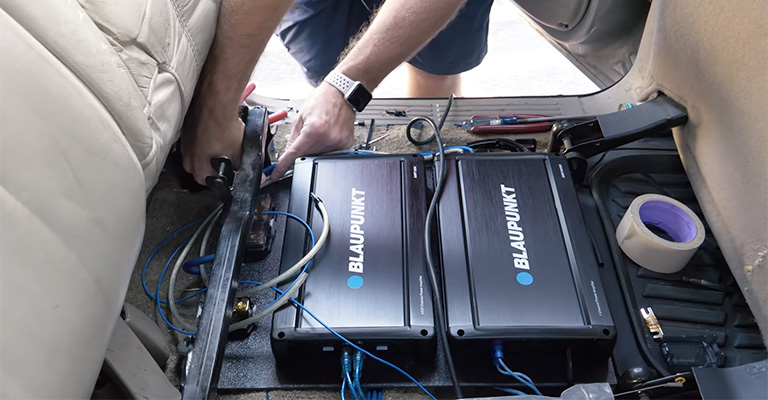
Can You Connect 2 Amps with 1 Power Wire?
Yes, you can connect multiple amplifiers to one power wire as long as you do it correctly and ensure that your remote turn-on lead can handle the two amplifiers. Adding an extra amplifier would mean you’ll have a significant boost to your car audio system’s performance.
Things You’ll Need
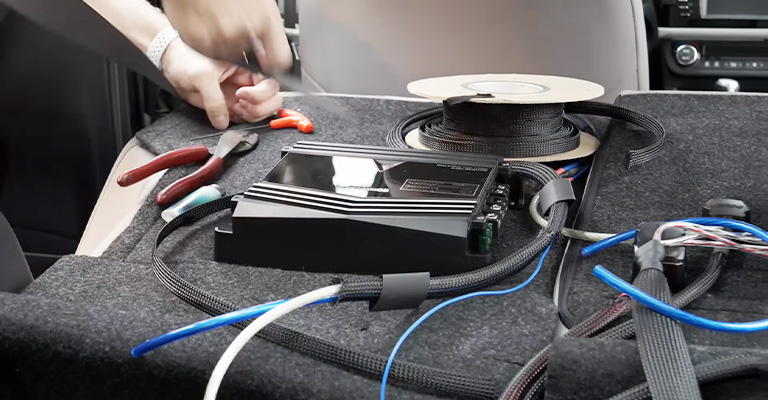
You’ll need the following thing to hook two amps with a single power wire successfully:
- Remote turn-on wire (remote wire) – it helps you turn on and off the amplifier when connected to your car’s audio system: the voltage is passed through this wire to the amplifier, turns on the circuit, and turns on the amplifier. It’s usually a blue wire with a white stripe.
- Power wire- often, the power wire is red in color and carries current from the power source to the outlet. It’s one of the most important components of car audio because you’ll have no sound without it.
- Ground wire- usually, the ground wire is black in color, and it eliminates the risk of electric shocks and power overflow. Therefore, stabilizing electric currents helps keep your car audio system components at zero risk.
- A fused distribution block- it enables you to properly distribute power and ground to multiple amplifiers from a single input source.
Step-by-step Guide on How to Hook Up 2 Amplifiers with a 1 Power Wire
Disconnect the positive terminal from your car’s battery
Start by disconnecting the positive terminal from your car’s battery. It helps prevent potential accidents resulting from electrical shock and shorts as you work with different cables.
Mount the amps
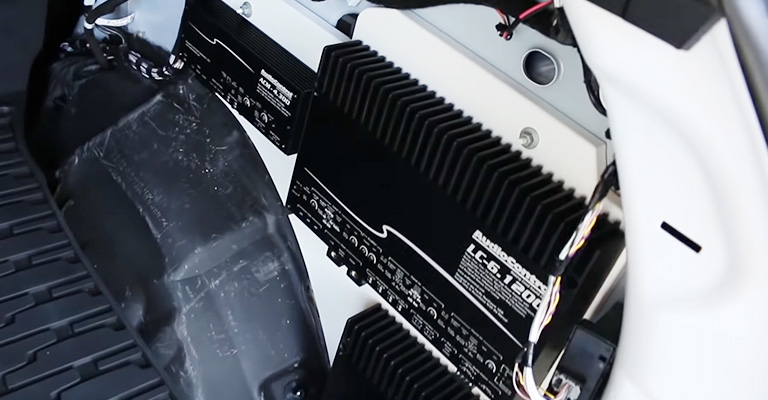
You need to mount the amplifiers to the desired location. If possible, you can position them next to each other. However, this depends on the space you have.
Run the power wire
Since you’ll be using an extra amplifier, you should expect the power consumption to double. Therefore, you must ensure your power cables are heavy enough to feed the two amplifiers you’ll be hooking with adequate electrical current. It also means you check each amp’s power rating to know precisely how much power each needs.
A fused distribution block is one component that will be of significant component you can use at this stage. It will help you manage and distribute power input according to each amp’s input needs.
Run the ground wire
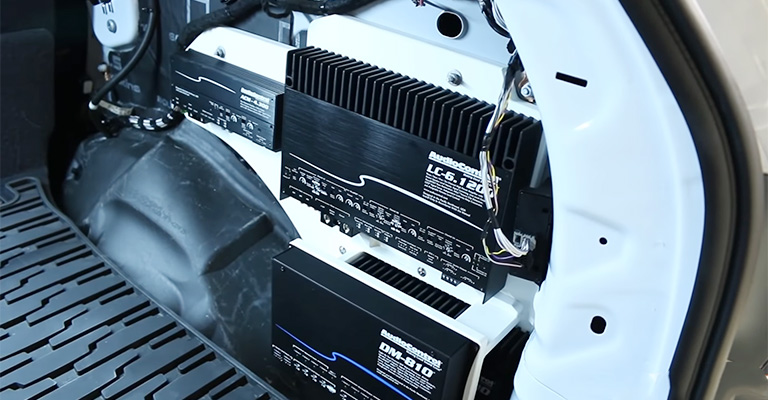
You’ll not need to ground each amplifier separately because you already used a distribution block. Therefore, you’ll only hook up the grounds of your amps to a single connection point, i.e., the distribution block. However, you must note a few vital things while grounding your amps. They include:
- The distribution block’s ground terminal should be attached to an ideal subframe ground or chassis with bare metal. More importantly, keep the distance between the amp and ground position close to less than 18 inches.
- Your amplifiers’ ground wires should be of a similar size to the power wires
- The cable connecting the distribution block to the grounding position should also be the same size as the cable connecting the battery to the power distribution block.
- Add the remote turn on cables
Your amps won’t turn on without a turn-on signal; therefore, you need to add remote turn cables. Since you have two amps, you cannot use a single lead to trigger both of them. For this reason, consider using a pair of turn-on leads. Then add a relay (12v relay) and connect each lead to the relay. It will help in switching on two amps at the same time using a single power wire.
Note: you can source power for the relay from the head unit, but running it on a second battery is best. It helps avoid possible current overload issues.
Connect the head unit to the amps
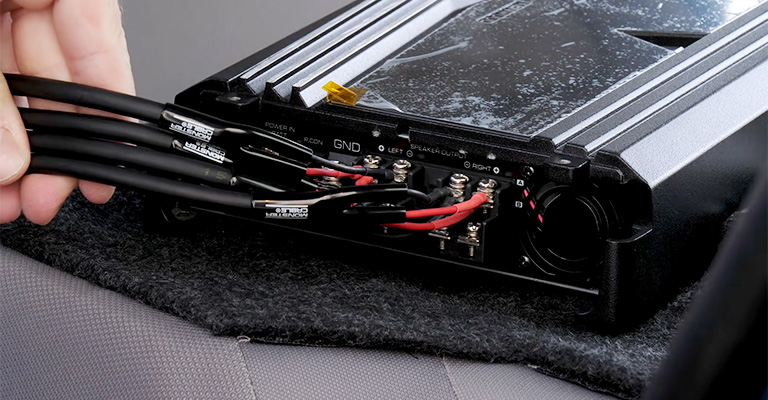
At this stage, you’ll need to connect the two amplifiers to the head unit through the built-in preamp outputs of the head unit. However, this would vary depending on the exact head unit you have. Alternatively, other apps may have pass-through capabilities, thus allowing you to connect one of the amp wirings to the second amp and then connect it to the head unit.
However, you’ll need a Y adapter if your setup doesn’t have built-in preamp outputs in the head unit or pass-through capabilities in the amp. You can use a basic RCA adapter.
Connect the speakers’ wire to the amps
Connecting the speakers’ wires to the amps is the final step. However, it may vary depending on the available preamp outputs. For instance, for some radios, you run the speaker wires directly to the amplifier if you have multiple preamp outputs.
At this stage, you should not ignore checking the speaker’s polarity and matching it with the amplifier’s. Positive terminals should go to the positive terminal and the negative to the negative.
Notably, it’s good you use 14-16 gauge cables for the speaker and 12-14 gauge cables for the subwoofer connection.
Final Thought
It’s possible to add more than one amp in your car’s audio setup from a single power wire, provided you wire them correctly, as discussed above. However, depending on how much power your amplifier needs, you may need a secondary battery.
Using two mono amplifiers in your cars is a powerful setup compared to a single stereo amplifier since it eliminates possible interference and distortion between channels while using multiple speakers.
Leave a Reply